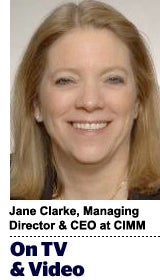“On TV And Video” is a column exploring opportunities and challenges in advanced TV and video.
Today’s column is written by Jane Clarke, managing director and CEO at the Coalition for Innovative Media Measurement (CIMM).
With the ever-increasing availability of larger and more granular media exposure data sets, one of the primary questions in cross-platform audience measurement today is whether we really need panels anymore and, if so, what kind?
These questions have become even more important during the pandemic as the TV industry faced reduced cooperation levels in panels, both in terms of participation and adherence to procedures. For a panel to work, all family members need to push buttons on a remote device to indicate their “presence in room” in order to be counted as part of the audience.
To be fair, the large, robust deterministic data sets that come from smart TVs, set-top boxes and digital servers can provide near census level measurement and detailed insight into TV, connected TV and digital video tune-in behavior.
They can also be used effectively to link to product usage data sets to plan campaigns for various audience segments and conduct post-campaign attribution. These data sets can even be linked to each other in order to deduplicate audiences across platforms via secure solutions for identity resolution.
But they do have their limits.
The gaps in between
By nature, each type of machine data has its own biases. Data from smart TVs, for example, skew toward the demographics of who buys each brand of TV. And smart TVs can’t, of course, report impressions delivered on sets from other brands in a home or from devices that aren’t connected to the internet. Most households have more than one TV set.
Set-top box data can provide second-by-second tune-in behavior, which can typically encompass more TV sets in a household – but only for that MVPD. Additionally, they can’t account for exposures on CTV or any other digital devices in the home.
Speaking of connected TV, CTV data itself is owned by each different streaming app, and there is no standardization in the way it’s collected. On top of that, the demographics across users of different apps is also not gathered in a standardized way.
AdExchanger Daily
Get our editors’ roundup delivered to your inbox every weekday.
Daily Roundup
And none of these data sources can provide viewer-level data, only household or device- level data.
The hope is to ultimately integrate complementary smart TV and set-top box data, but as a recent study conducted by CIMM has shown, this is a complex data science challenge. And that’s even before adding digital ad and content exposure data to the mix.
Where panels come in
So, what role and purpose can panels, long the mainstay of audience measurement, play against this backdrop?
One of its most important purposes is to calibrate big data sets.
By calibrating machine data with panel data to provide a more comprehensive analysis of individual viewers, we can get a more accurate sense of who – and how many – household members are in front of a TV set. Panels can provide missing data, such as over-the-air viewers who are not represented in smart TV or set-top-box data. Panels also help us better understand viewing journeys between all the forms of TV, linear, VOD and streaming across devices.
But what kind of panel – or panels – works best to meet these objectives?
Single source panels – those that give you a view into both converged TV and digital behavior – would be ideal, but it could be too much to ask everyone in a household to cooperate with measuring all their devices. It’s also unclear whether these panels can measure both Android and iOS environments for mobile devices, computers and TVs at the detailed level of content and ads attributed to a distribution source, such as a network or an app.
It’s important to point out that single-source panels that capture both TV tune-in and digital behavior for all household members and all devices – and that provide detail into individual viewers – do not yet exist in the US.
Panels for television, however, do of course exist, as do separate panels for mobile devices or computers. But previous attempts in the industry to add more devices into single-media measurement panels have been proven to reduce overall compliance, which in turn reduces the quality of the data. It’s challenging to ask more and more of consumers in panels, especially when cooperation levels for participating in any kind of panel or survey are declining overall.
The best approach at this juncture may be to find ways to link a high-quality, passive TV measurement panel with similar high-quality mobile and/or computer panels. This could potentially be done by using passive router meters in both panels to provide hooks between data sets. This method, and potentially other methods currently in development, need to be pilot tested to determine the best methods for recruiting and providing incentives to panel participants. It goes without saying that passive measurement is best!
While panels may be seen as an “old” way of measuring audiences, they still do provide an important building block in cross-platform measurement. The industry simply needs to test its way to the best approach.
Follow CIMM (@CIMM_NEWS) and AdExchanger (@adexchanger) on Twitter.












